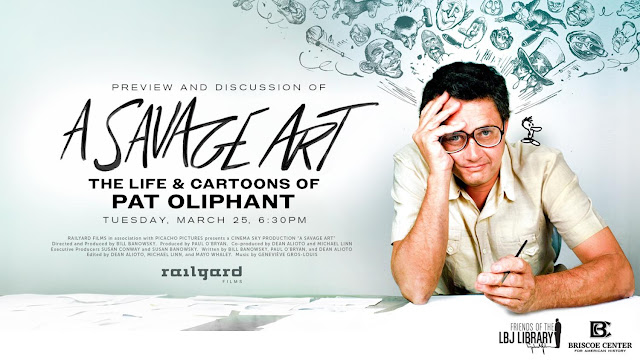Thanks to my friend Mark Ricketts,
I heard about this meme: pick ten books that influenced you and let us
all know about it. And don't spend a lot of time messing around. Just
pick 'em as they pop up in your head.
My head is a large and musty place, so it took a little doing, but here goes. It's in no particular order, here are the books:
PLAIN SPEAKING by Merle Miller
Truman is one of my favorite historical figures. Ask anyone who's
dropped by and seen my bookshelves. I have a shelf devoted to him.
THE ANNOTATED ALICE by Martin Gardner (and Lewis Carroll, natch!)
I used to carry this around in my backpack in high school. I was such a nerd boy.
BARNABY AND MR. O'MALLEY by Crockett Johnson
Forever grateful to Dad for passing along his copy of this great comic strip.
BATMAN FROM THE 30s TO THE 70s
The first book I bought with my own money. It was a lot! I think it was $10. I used to copy Dick Sprang's Batman a lot.
DINOSAURS AND OTHER PREHISTORIC REPTILES
My go-to dinosaur book, finally bought for me when I renewed and renewed
the book from the Iowa City Public Library. I still have my copy, which
I would tote to Roosevelt Elementary School for show and tell. And
there's still a "Mike Lynch, Mrs. Panje, 2nd Grade" written in it. I
wonder where Mrs. Panje is now?
The LITTLE TIM books by Edward Ardizzone
I love Ardizzone's work. Some of the best drawing around. A prolific
illustrator back in the day. He was Great Britain's Official War Artist!
Only recently I have learned he was never formally trained in
illustration!
THE POGO PEEK-A-BOOK by Walt Kelly
I have all of Dad's Simon and Shuster POGO books and this one gets singled out for the
"Account of the Wooful Frog" piece. Kelly is the comic strip touchstone for me. None better.
THE COMICS by Jerry Robinson
The one that hooked me. And when I visited Ger Apeldoorn, he showed me
his copy and told me that that was the book that got him interested in
comics and their history! That was it. Friends forever!
THE WORST JOURNEY IN THE WORLD by Apsley Cherry-Garrard
Maybe the best account of an expedition. In this case, it's Robert
Scott's last Antarctic expedition. Another book recommended by Dad. It's
a wowser!
SKIPPY by Percy Crosby
If there's a close second to POGO, it's SKIPPY. Highly popular in its
day, and now the focus of a reprint series of books authorized by Percy
Crosby's daughter, Joan Crosby Tibbetts. I got to know Joan over the
email, and then we met in person at a National Cartoonists Society
Reuben Awards weekend. Anyway, SKIPPY was Charles Schulz' favorite comic
strip growing up and even now, decades later, it crackles with life for
me.
That's ten for me. How about you?






.jpg)























































